
Discover how remote consultations create smarter and more accessible veterinary service
Introduction
Why Does Telehealth Matter and Are Virtual Vet Visits Worth It?
How Does Veterinary Telemedicine Work?
Key Statistics: Telehealth Adoption in Veterinary Practice
Telehealth Adoption by Region
Pet Owner Behavior and Satisfaction
Benefits for Veterinary Practices
Supporting Data and Context
Telehealth Use Cases & Applications
Benefits of AI and Telehealth in Veterinary Care
Build Your AI-based Veterinary Telehealth Solution With Us
Why Choose Us?
Our Success Stories
We Create Digital Veterinary Ecosystem
Telehealth + AI
Get Inspired by Industry-Famous Pet Care Companies & Startups
Challenges and Solutions in Telehealth Veterinary Medicine
Conclusion
The veterinary industry stands at a technological turning point. With a global pet population now exceeding one billion (GlobalPETS), the demand for accessible, high-quality care has never been greater. Pet owners expect convenience and immediate support, while veterinary professionals face increasing workloads.
This guide explores the two innovations that define the future of animal health: veterinary telehealth and artificial intelligence. Learn how these technologies work together to solve today's most pressing challenges.
We will provide the data, use cases, and expert insights you need to navigate this new landscape and build a more efficient, intelligent, and compassionate practice.
The scope of digital technology for pet care is already quite wide and versatile. Let’s first introduce you to some general terms you might meet when exploring the area.
The overarching term for using technology to provide remote animal health care services. Telehealth for pets includes telemedicine, client education, and other communications.
A medical and legal requirement in most regions. It exists when a veterinarian has assumed responsibility for a pet's health, and the client has agreed to follow the vet's instructions. The rules for establishing a VCPR (in-person vs. remotely) vary by location.
A subcategory of telehealth. Telemedicine in veterinary medicine is the practice of medicine using technology to deliver care from a distance, including diagnosis and treatment plans.
The safe and remote assessment of a patient to determine the urgency and need for an in-person visit with a veterinarian.
A remote consultation between a primary care veterinarian and a specialist to discuss a specific case.
Computer systems that perform tasks that normally require human intelligence. In veterinary medicine, the most common AI use cases are image analysis, pattern recognition, and data processing.
A subset of AI where algorithms learn from data to make predictions or decisions without being explicitly programmed for the task.
An AI field that trains computers to interpret and understand information from digital images and videos, such as radiographs or microscope slides.
There is no simple, one-size-fits-all answer. Telehealth for pets is not a replacement for in-person care, but a powerful extension of it. It matters because it resolves critical issues for everyone involved:
It increases patient capacity without physical expansion, creates new revenue opportunities, and improves client retention through convenience.
It offers flexible work options, reduces burnout from travel and late-night emergencies, and allows them to focus on cases that truly require hands-on attention.
It provides immediate access to expert advice, removes the stress and logistics of travel (especially for anxious pets), and is often more affordable for follow-ups and minor concerns.
Veterinary telemedicine connects pet owners with veterinarians through a simple digital process:

A pet owner requests a virtual consultation through a web portal or mobile application, providing initial information and photos.
At the scheduled time, the owner and veterinarian connect via a secure live video call.
The veterinarian observes the pet's behavior and condition, guided by the owner. The owner describes the symptoms and history.
Based on the assessment, the veterinarian provides medical advice, a diagnosis (where a VCPR exists), a treatment plan, or recommends an immediate in-person visit for emergencies.
Digital records of the consultation are created. If legally permitted, prescriptions can be sent to a pharmacy. The platform can also schedule follow-up appointments.
The global veterinary telehealth market was valued at $306.7 million in 2024 (Grand View Research) and is expected to grow to nearly $921.4 billion by 2030, with a projected annual growth rate of 20.3%. This rapid growth is driven by rising pet ownership, the "humanization" of pets (treating them as family), and a desire for more convenient care options.
2024
2030
North America holds the largest share of the market, accounting for 42.8% in 2024. It’s followed by Europe (around 36%), the Asia Pacific region (15%), and Latin America and MEA, accounting for less than 2%.
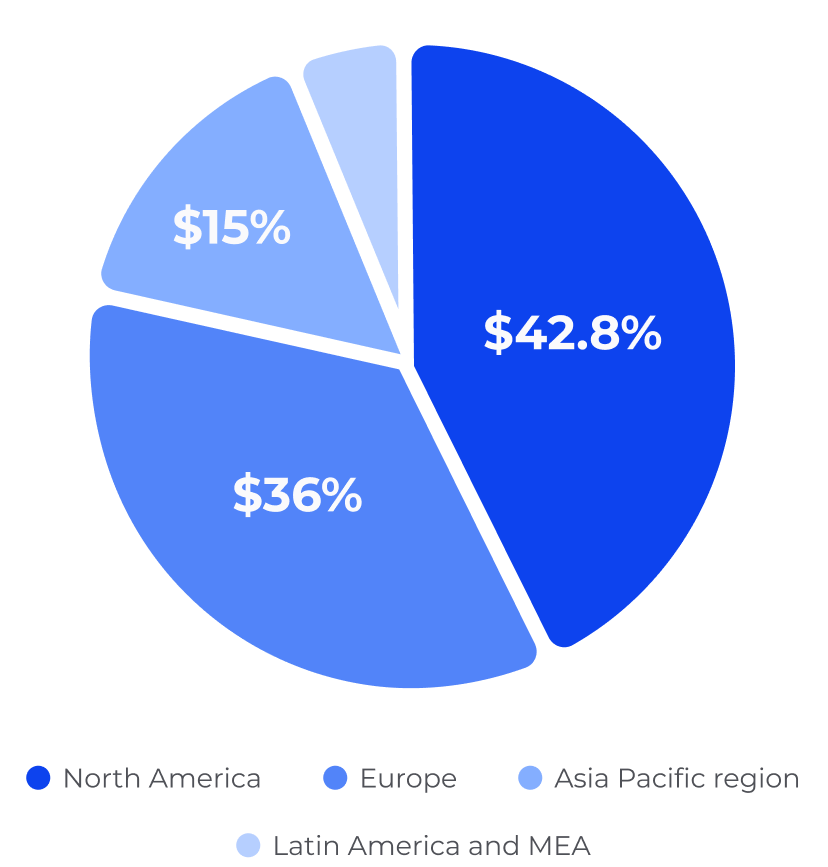
India is expected to have the highest CAGR from 2025 to 2030 at 26.53%. The "Patients" (pet owners) segment led the veterinary telemedicine market in 2024 and is expected to grow with the highest CAGR.
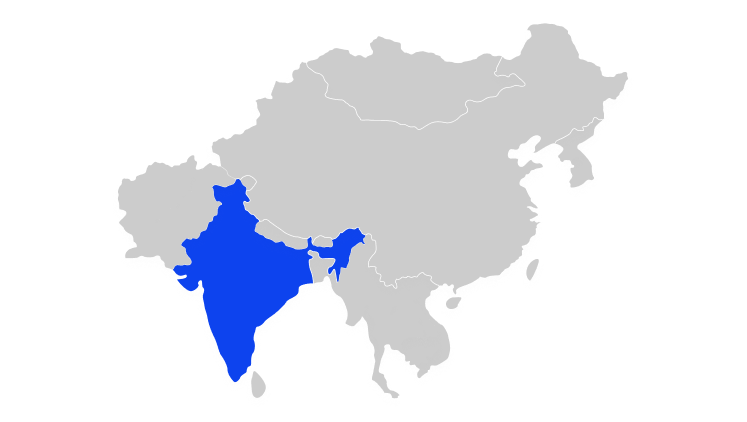
Teleconsulting services, where a vet provides advice via phone or video, are the most popular type of telehealth, making up $132.8 million in revenue in 2024 and holding the highest market share at 36.36%. The number of small animal care practices employing telehealth increased from 12% to 38% in the pandemic-driven 2020. (PMC)
As for animal type, the canine segment held the highest market share in 2024. The feline segment is anticipated to grow at the highest CAGR of 21.16%.
The cloud/app-based delivery mode held the highest market share in2024 and is estimated to have the highest CAGR
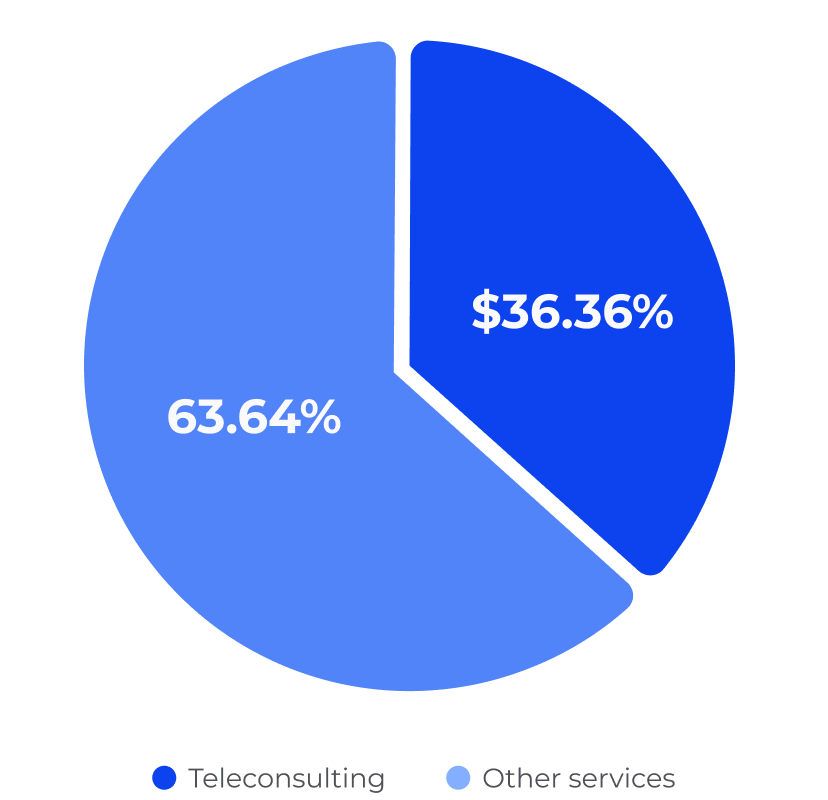
While the market is growing, the adoption of AI in day-to-day veterinary practice is still in its early stages. However, the momentum is undeniable.
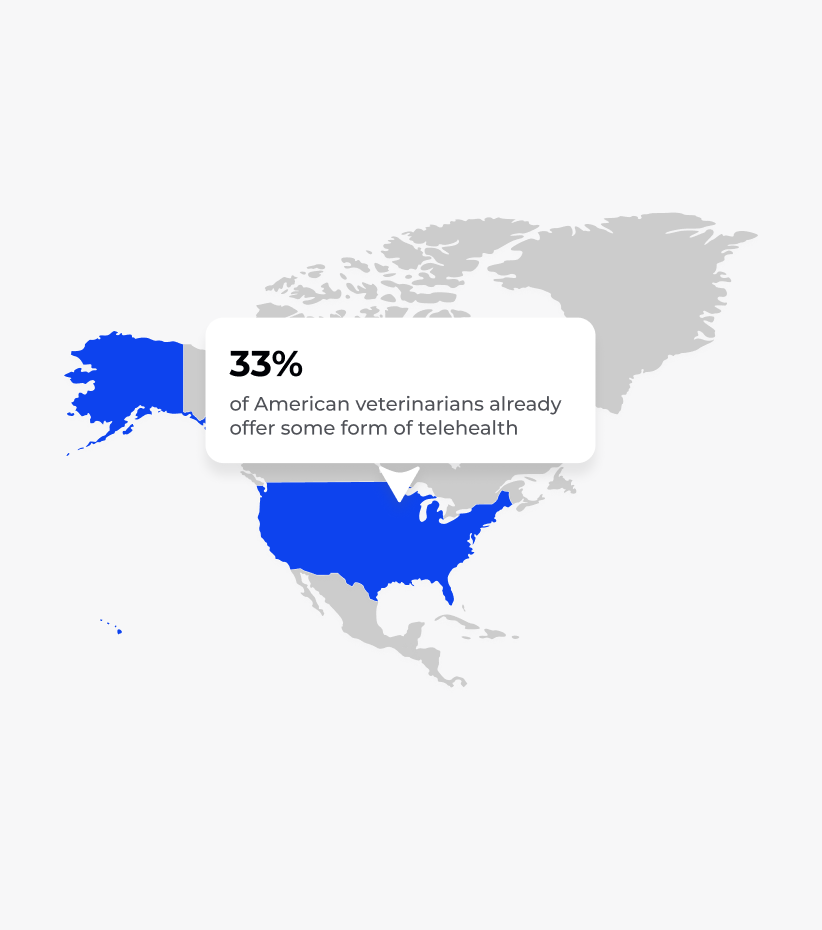
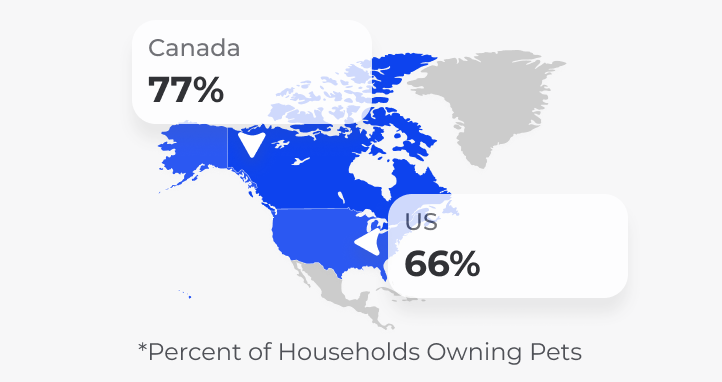
The US leads the world, making up the largest portion of the global veterinary telemedicine market. By early 2023, about 30% of American veterinarians were offering some form of telehealth, including video calls, phone advice, and text messaging. (NY Times)
One of the most common uses is teletriage to assess the urgency of a situation, post-operative follow-ups (e.g., sending a photo of an incision), managing chronic conditions like diabetes, and providing behavioral consultations.
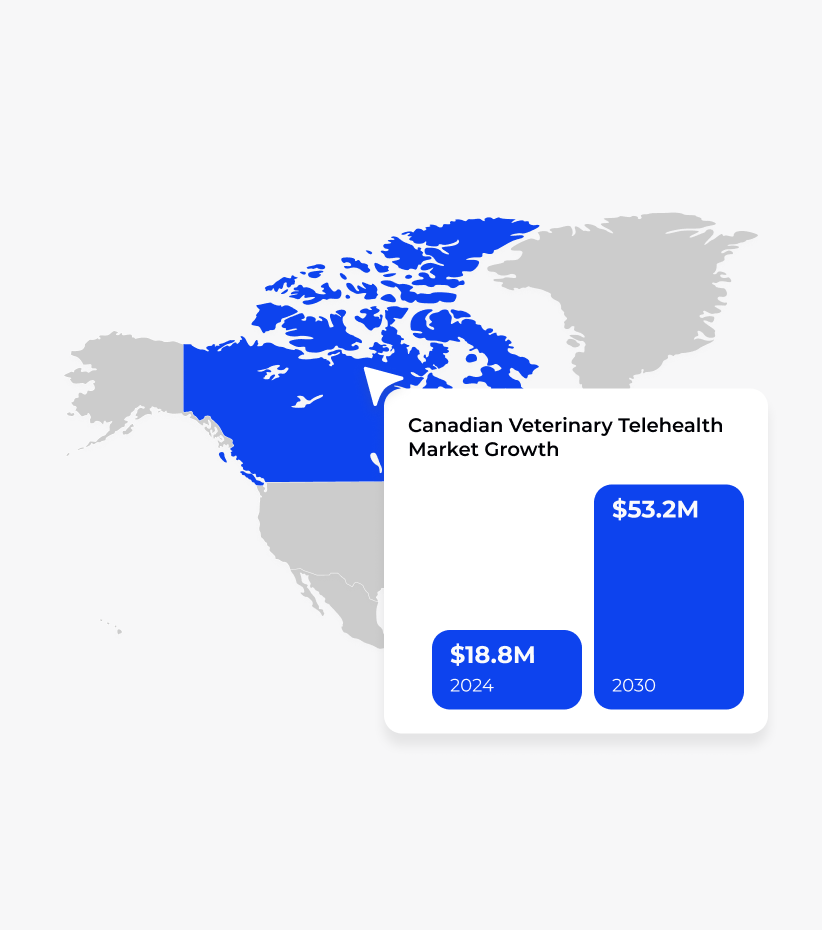

The Canadian veterinary telehealth market is a growing sector, with a projected revenue of $53.2 million by 2030, a significant increase from $18.8 million in 2024. This represents a compound annual growth rate of 19.7% from 2025 to 2030. (Grand View Research)
Within the market, teleconsulting was the largest revenue-generating segment in 2024, while teleradiology is expected to be the fastest-growing segment during the forecast period.
Similar to the US, the use cases for veterinary telehealth in Canada are diverse, including teleconsulting for general health advice, teletriage for urgent situations, and teleradiology for remote image analysis.
However, the regulatory landscape is a key factor influencing adoption. The rules regarding the establishment of a veterinarian-client-patient relationship and the ability to prescribe medications remotely vary by province and are determined by each provincial and territorial regulatory body.
While many provinces relaxed some requirements during the COVID-19 pandemic, veterinarians must be licensed in the province where the animal is located to provide services, and some jurisdictions still require an initial in-person visit to establish a VCPR.


The use of telehealth is increasing rapidly. A major driver was a 2023 rule change that made it easier for vets to prescribe medications remotely. (Vet Help Direct) Even before this, over half of UK vet practices were already offering remote services in 2021.
UK pet owners show interest, with some surveys indicating up to 25% of pet owners who never used telehealth are willing to use a virtual vet service.
Remote prescribing is a significant and growing trend. Subscription-based services that offer unlimited 24/7 video consultations for a monthly fee are also very popular, bundled with pet insurance policies for convenient, round-the-clock advice.

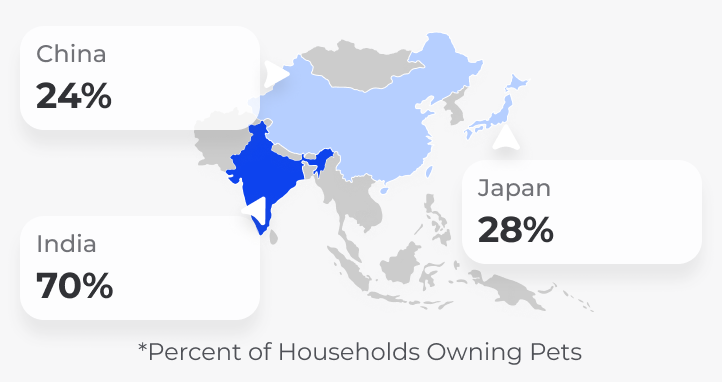
As a whole, Europe is the second-largest market for veterinary telehealth. Adoption is not uniform across the continent, with countries like Sweden (a 300% increase in the last 7 years, according to Grand View Research) and Germany (a threefold increase) being early leaders with well-established platforms. The market is expected to continue its strong growth as more countries modernize their regulations.
In Scandinavia, a digital-first model is common, where a video call is the standard first step for non-emergencies. Using telehealth for specialist consultations (connecting general vets with specialists for advice on complex cases) is also a growing trend that improves access to care in rural areas.
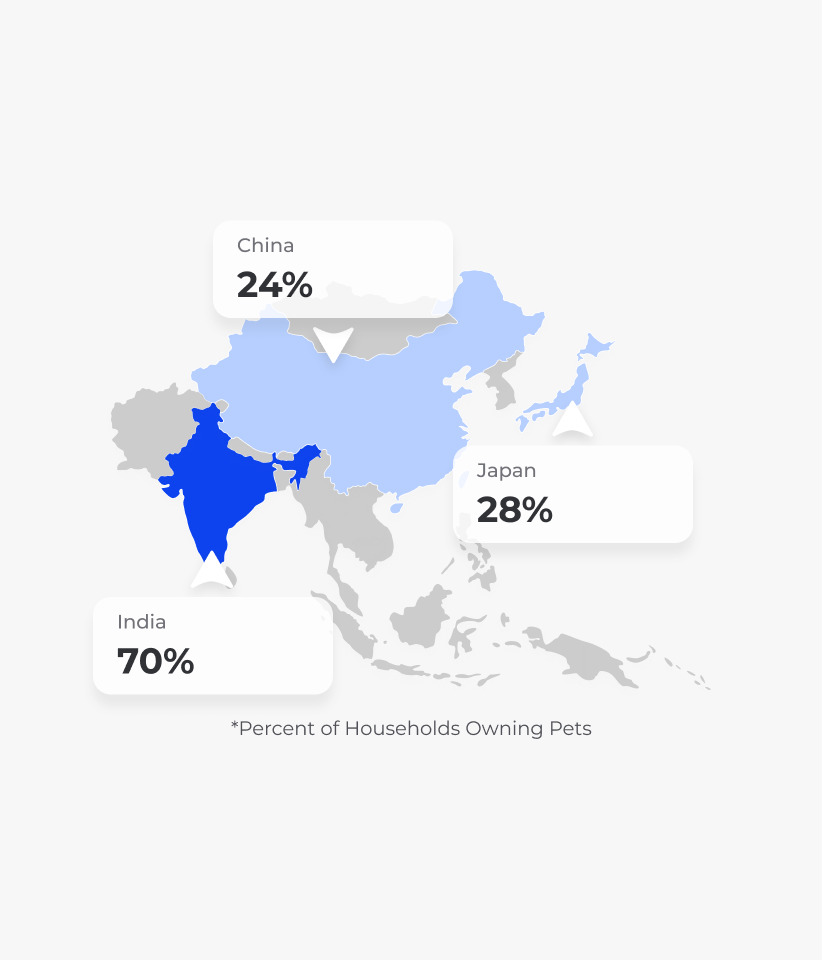

In Australia, there are no clear market statistics on veterinary telehealth adoption. However, the overall adoption of telehealth services is quite high, with 86% of respondents showing interest in ongoing virtual health consultations, according to a 2020 survey. (AJGP)
Another strong indicator is the high rates of pet ownership (69%) across the country and frequent use of vet services. (Animal Medicines Australia)
The market is dominated by all-in-one mobile apps. These platforms offer on-demand video and chat consultations and often integrate e-commerce for pet food and medication. Beyond treating sickness, there is a strong trend toward using these apps for preventative services like virtual nutrition and wellness coaching.
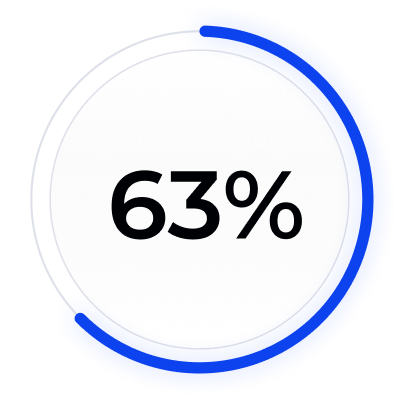
Research shows that over 50% of pet owners who had experience with telemedicine for their pets were very satisfied with the sessions. (PMC) About 63% of pet owners reported that the tele-sessions were very helpful for overcoming transportation or cost barriers, showing how telehealth increases access to care.
According to other studies, owners found that telehealth saved them an average of 50 minutes in travel time. (PMC) Some also reported that their pets were less anxious or nervous during virtual consultations compared to in-clinic visits. (Applied Animal Behaviour Science)

Telehealth services can help clinics manage their workload more efficiently. Veterinarians who use telehealth reported that 72% of their virtual appointments took the same amount of time or less than in-person ones. (Veterinary Evidence)
Offering telehealth for pets can also reduce no-show rates and help practices retain more clients. (PMC) The convenience of virtual visits makes it easier for pet owners to keep their appointments.
These statistics confirm that telehealth in veterinary practice is not a passing trend but a rapidly expanding and integral part of the industry. Driven by a global veterinary telemedicine market projected to nearly triple by 2030, its growth is fueled by increasing pet ownership, the "humanization" of animals, and a desire for convenient and accessible care.
As regulatory bodies adapt, new technologies like AI and IoT are integrated, telehealth is poised to become a more essential tool for addressing challenges like vet shortages and managing the health of both companion animals and livestock on a global scale.

Telehealth makes it possible for vets to help pets and their owners from a distance. This means less stress on the animal, more convenience for the owner, and more efficient use of a vet's time. Here are some of the most common ways telehealth is used.
A vet can help an owner figure out if their pet's problem is a true emergency that needs an immediate visit to a clinic.
A pet owner might use a video chat on their phone.
They show the vet a sick pet.
The vet can see the pet's breathing, how it walks, or where it might be hurt.
Based on what they see, the vet gives advice. For example, they might say, "That limp does not look serious. Give it a rest and call us in the morning if it gets worse."
This saves a late-night trip to an emergency room for a non-urgent issue.
Secure video platforms, mobile apps with chat and video features, and AI-powered symptom checkers.
An AI chatbot or a virtual assistant can be the first point of contact:
The owner tells the bot about the symptoms.
The bot then asks a set of specific questions, like a vet would, to collect key information.
It can then tell the owner, "Based on what you describe, this is likely not an emergency, but you should still talk to a vet soon."
In this scenario, AI helps filter cases and lets the vet focus on more serious situations. The AI can also analyze images of a pet's eyes or skin to give a primary analysis and help determine if a professional consultation is needed.
Vets check on a pet's recovery after surgery without an in-person visit.
An owner sends the vet pictures of the surgical wound every day.
The vet can see if the incision looks red or if there is swelling. This helps the vet spot problems early.
The vet can give advice like, "It looks like the wound is healing well. Just keep watching it, and make sure your pet does not chew it."
This saves the pet from a stressful car ride and a trip to the vet's office.
A secure platform that lets owners share photos and videos, and a messaging system for quick check-ins.
An AI system can analyze photos of a surgical site and can be trained on thousands of images of healthy and infected wounds. It can flag images that show signs of infection, such as excess redness or swelling, and automatically alert the vet to take a closer look.
This means vets do not have to review every photo daily, saving them time and making sure they spot potential problems faster.
Vets and owners manage long-term health issues in pets through regular, remote check-ins.
A pet with diabetes needs regular checks on its blood sugar.
The owner can use a small device at home to test the pet's blood.
Then, they send the readings to the vet through an app.
The vet reviews the data and lets the owner know if they should change the pet's medication or diet.
This makes it easier for the owner to manage their pet's condition and keeps the pet healthier over time.
Wearable devices for pets that track health data, mobile apps for sharing information, and integrated electronic health records (EHRs).
Wearable devices and smart feeders can collect real-time data on a pet's health, such as activity level, heart rate, and weight. AI can then analyze this large amount of data to spot patterns or trends that a human might miss.
For example, if a pet's activity level drops over several days, the AI can alert the vet, suggesting a possible problem. The vet can act before the small problem becomes a big one.
A vet helps with a pet's behavior problems by seeing the pet in its own home.
An owner has a dog with separation anxiety.
They use a video call with a vet.
The vet sees the dog's behavior in its natural setting, not in a new and strange clinic.
The vet can watch how the dog acts and give specific tips. For example, the vet might say, "Try giving them their favorite toy right before you leave. That helps them focus on something else."
Video chat platforms like Zoom or a clinic's own secure video system.
AI-powered cameras and smart devices can track a pet's behavior all the time. For example, a camera might notice that a dog paces back and forth whenever the owner is not home. The AI can count the number of times this happens and send a report to the vet.
The vet gets detailed and objective data, which is more helpful than a general description from the owner. AI is also being developed to analyze pet vocalizations and facial expressions to help vets understand a pet's emotional state better.
A vet helps an owner create or change a pet's diet plan remotely.
An owner wants to help their overweight cat. They schedule a video call with a vet who specializes in pet nutrition.
The owner shows the vet what they feed the cat and how much.
The vet gives advice on what food to switch to and how much to give it.
They can make a custom plan and check in weekly to see how the cat is doing.
Video calls and apps that allow for easy sharing of food logs and weight tracking.
An AI can create a highly personalized diet plan, following these steps:
The owner enters data like the pet's age, weight, breed, and health conditions into an app.
The AI looks at a large database of pet foods and nutritional science to suggest the best diet.
It can even predict potential health issues related to nutrition, such as diabetes or nutrient deficiencies, and recommend a diet to prevent them.
Vets check skin problems, rashes, and allergies that are easy to see without physical touch.
A dog has a strange red rash on its stomach.
The owner takes a clear picture and sends it to the vet through the clinic's app.
The vet looks at the image and sees the rash. They tell the owner, "That looks like an allergic reaction. Try a special shampoo and an over-the-counter medicine. If it does not get better, come in for a visit."
This saves time and money for the owner.
High-quality photo and video sharing through a secure messaging system.
AI-powered image analysis tools can help vets in the same way they help post-op care:
The owner sends a picture of the skin condition, and the AI immediately scans it for common issues like yeast, bacteria, or inflammation.
It can help the vet get a faster and more accurate diagnosis.
The vet can quickly give a treatment plan, and also get help with documentation from automatic identification and flagging of key findings in the images.
Vets give compassionate support for pets in their final stages of life.
An owner has a very old dog with a lot of pain. It is hard and stressful to take the dog to the clinic.
The vet can do a video call to check on the dog's comfort level.
The vet talks to the owner and adjusts pain medicine dosages.
They offer support and help the owner make the best decisions for their pet's final days in a familiar and calm environment.
Secure video calls and a reliable messaging system for quick support.
AI tools can track a pet's quality of life with wearable sensors, which measure a pet's movement, sleep patterns, and other vital signs. Then, algorithms can analyze this data to give the vet a clear picture of the pet's comfort level.
If a pet's activity drops significantly, the AI can send an alert, letting the vet and owner know that a change in pain medicine or a new care plan may be needed.
The vet receives objective data to support the owner's subjective observations.
A general vet gets help from an expert who works in another place. This can be in the form of teleradiology, telecytology, and other specific areas that might not be available at the offline site.
A vet takes an X-ray of a pet's broken leg. The vet can send the digital X-ray file to a specialist vet, a radiologist, who is in a different city.
The radiologist reviews the image and sends back a detailed report with an opinion.
This helps the local vet give the best possible care without needing the pet to travel to see the specialist.
This also works for other types of tests, like blood samples or tissue biopsies.
Secure systems for sending large digital files (like X-rays or ultrasounds), also known as PACS (Picture Archiving and Communication Systems), and cloud-based platforms for review.
AI can read and analyze the X-ray or ultrasound image before the specialist sees it. It can be trained on a massive number of images to spot small details a person might miss. Then, it can flag areas of concern, such as a subtle fracture or a possible tumor, and give the specialist a report.
This helps the specialist work faster and more accurately. Any general practice vet can get a fast first opinion on the images, which can help them decide on the next steps for the pet.
At Akveo, we build software intending to architect the future of pet care. Our expertise is in developing robust, compliant, and user-friendly digital solutions that integrate into the veterinary workflow.
We blend our deep knowledge of pet health with cutting-edge app and software development to create digital solutions that enhance your practice and improve pet outcomes.

We build tailor-made software from the ground up to fit your practice’s unique needs and business goals.

Integrate powerful AI tools that assist with diagnostics, image analysis, and predictive health insights.
Connect your new software with existing systems and smart devices like collars and feeders for a unified view of pet health data.
Launch your new vet app with a powerful Minimum Viable Product to test the market, attract investment, and gather user feedback.
Our in-house design studio comes up with user-friendly interfaces that are simple for vets, staff, and pet owners to use. You get smooth adoption and a great user experience.
Our thorough testing process ensures your software is secure, bug-free, and dependable, so you can focus on providing the best care.
We live and breathe PetTech. Our team understands the unique clinical, regulatory, and business challenges of the veterinary industry.
We have a track record of successfully deploying complex AI and machine learning models that deliver real diagnostic and operational value.
Our dedicated in-house design team creates intuitive interfaces for both veterinarians and pet owners, ensuring high adoption rates and user satisfaction.
Our platforms are built with HIPAA-level security and designed to comply with evolving veterinary regulations like VCPR.
Connect with our PetTech experts for a free consultation and discover how our custom software solutions can transform your practice.
Modern veterinary care is more than one application. It is an interconnected system of digital tools powered by intelligent automation.
Imagine a telehealth consultation where an AI is working backstage:
As the pet owner describes symptoms, an NLP tool transcribes the conversation and highlights key terms.
When the owner shows a skin lesion on video, an AI-powered computer vision tool analyzes the image and provides the veterinarian with a list of potential differential diagnoses.
This is not science fiction; it is the next generation of veterinary telehealth.
Go deeper: Read our exclusive report, AI in Veterinary Medicine: From Diagnosis to Delivery, to learn how to leverage this powerful synergy in your practice.
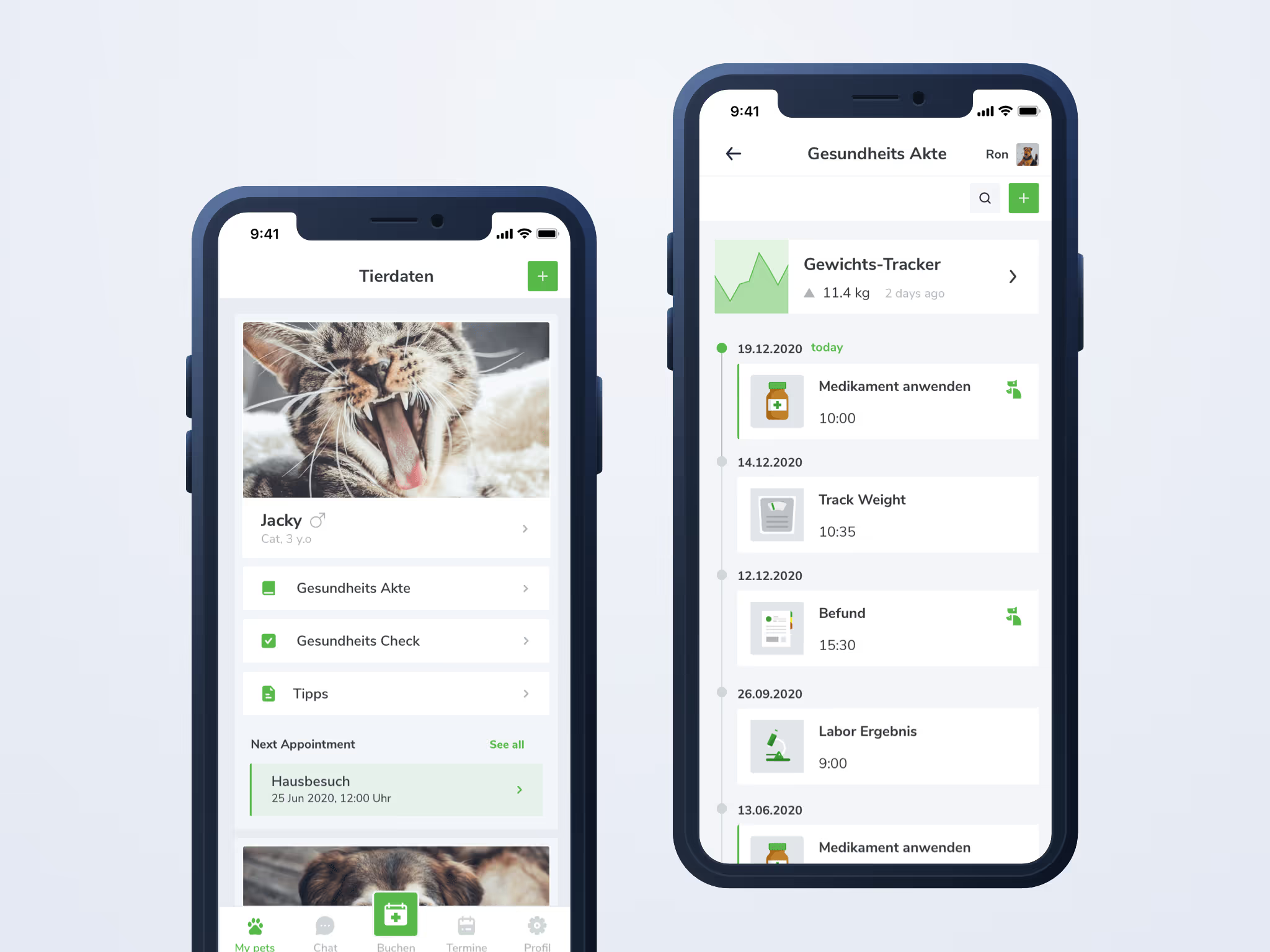
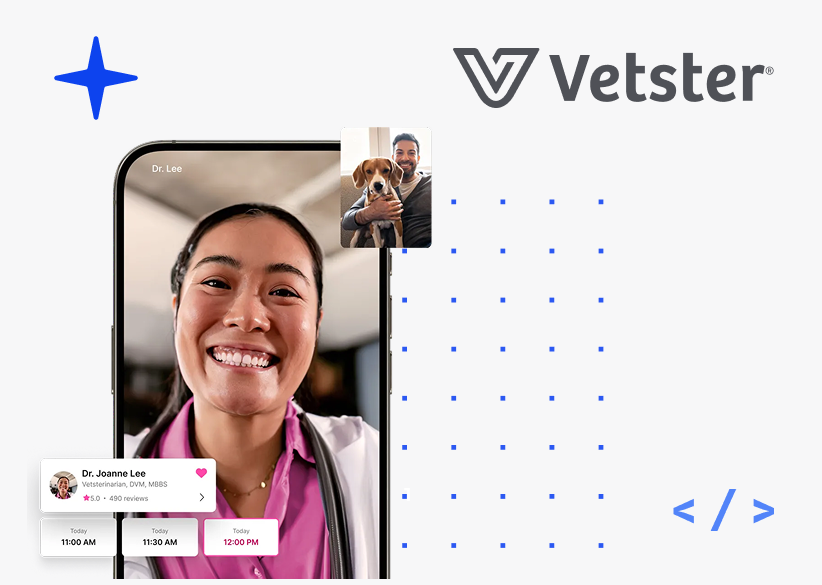

Who & When
Co-founded by Mark Bordo and Regan Johnson in 2020 as a veterinary telehealth marketplace.
How
This company connects pet owners with thousands of licensed vets for on-demand online appointments, which became vital during the pandemic.
Key Features
Vetster offers 24/7 video, text, and voice chat appointments and can provide prescriptions sent to a local pharmacy.
Reviews
Customers love the convenience of getting expert help without the stress of an in-person visit.


Who & When
Co-founded in 2021 by Carlos Moreno and Joe Spector, with a focus on treating chronic conditions like anxiety and allergies.
How
Dutch provides virtual vet visits via Zoom and personalized treatment plan development that includes prescriptions and over-the-counter treatments delivered to your door.
Key Features
They offer a blend of virtual care with free prescription delivery and an optional $10,000 emergency insurance coverage.
Reviews
Users appreciate the convenience and affordability, but some have reported issues with customer service.

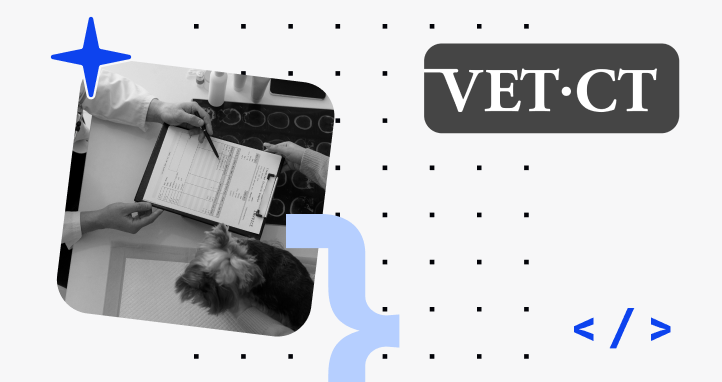
Who & When
Founded in 2019 by Andrew Malek, Cody Simons, and Marc Atiyeh, who saw a need for accessible pet health advice.
How
Pawp was established as a digital pet health clinic offering 24/7 access to vets via video and text.
Key Features
Their most unique feature is a $3,000 annual emergency fund that can be used for a pet's emergency expenses.
Reviews
Customers call Pawp a game-changer for the peace of mind it provides and its ability to help them avoid unnecessary emergency vet trips.
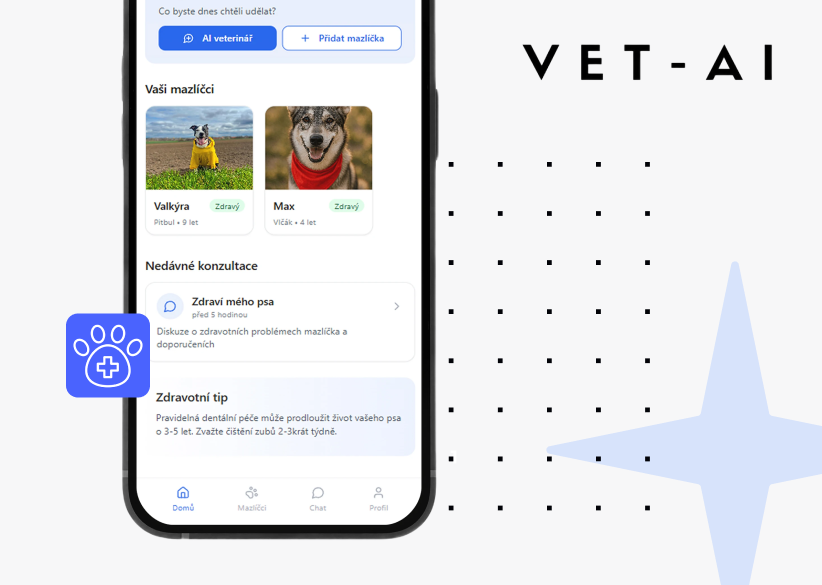

Who & When
A UK-based company founded in 2017 by tech expert Paul Hallett and veterinarian Robert Dawson.
How
The company created the AI-powered triage app, Joii Pet Care, which helps pet owners determine the best course of action for their pet's symptoms.
Key Features
The app offers a free symptom checker and provides access to video consultations with UK-registered vets for a flat fee.
Reviews
Users praise the app for its convenience and the professional, helpful advice they receive from vets.
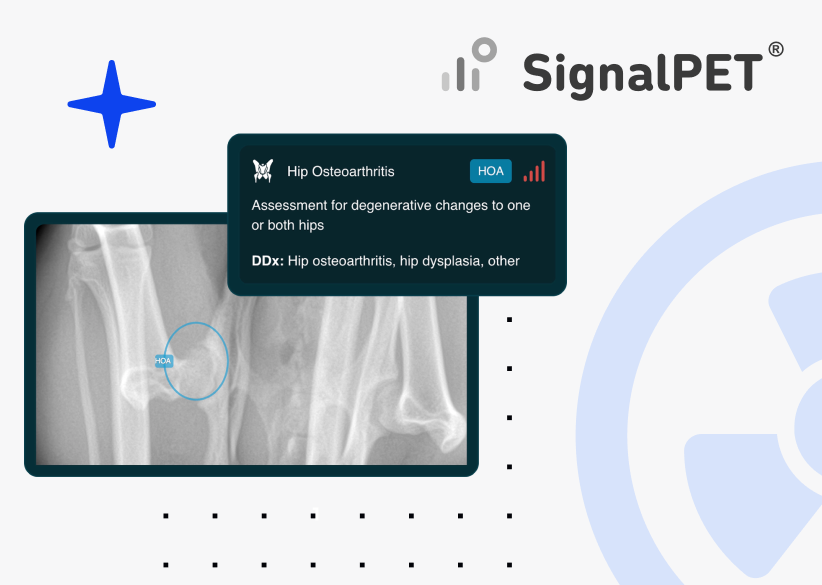

Who & When
Founded in 2018 by veterinarian Dr. Neil Shaw.
How
SignalPET was created to provide a consistent and objective "second set of eyes" for veterinarians by using AI to analyze X-rays.
Key Features
The service offers rapid, standardized interpretations of X-rays with results available in minutes, so vets can make faster and more accurate diagnoses.
Reviews
Users praise the app for its convenience and the professional, helpful advice they receive from vets.
While artificial intelligence and telehealth are powerful technologies, successful adoption requires addressing key challenges.
The complex and varied legal landscape of the VCPR.
Develop geo-aware software that automatically adjusts its features and disclaimers based on the user's location to ensure compliance.
The inability to perform a hands-on physical exam.
Integrate data from remote monitoring devices (wearables) and develop protocols to train pet owners to perform guided assessments, such as checking capillary refill time.
Ensuring data privacy and security for sensitive patient information.
Collaborate with teams who build platforms using end-to-end encryption, secure cloud infrastructure, and strict access controls. Consult PetTech experts on how to adhere to VCPR standards.
Potential for AI algorithms to have biases based on their training data.
Use large and diverse datasets for AI model training and partner with AI vendors who prioritize transparency, have pet care expertise, and provide explainable AI XAI that shows how a conclusion was reached.
Care will move beyond breed-specific advice. AI will generate wellness and nutrition plans based on an individual pet's genetic markers, activity level from wearables, and microbiome data.
Seamless integration between smart feeders, litter boxes, activity monitors, and the veterinary clinic's EMR. Your vet will know about a change in your cat's weight before you do.
Likely, by 2026, generative AI (like GPT-4 and beyond) will be used to draft personalized post-visit summaries, answer common client questions, and create educational content to save hours of administrative time.
The generative AI adoption and investments in its development in the workplace grow, and medical institutions are among the first to lead the trend. (McKinsey)
Biosensors in collars, patches, or even implants will provide a continuous stream of vitals, enabling true preventative care and real-time monitoring of chronic conditions.
Spoiler
No. AI will augment veterinarians, not replace them. Technology is a tool. It can process data and recognize patterns with incredible speed and accuracy, but it lacks the critical thinking, empathy, and hands-on skill of a trained veterinarian.
AI will handle the data-heavy tasks, freeing veterinarians to do what they do best: build relationships with clients, perform complex procedures, and make the final, nuanced decisions about a patient's care.
Telehealth is currently powered by all types of tech, including AI, which don’t compete with each other but make a complementary force that is reshaping veterinary medicine. Together, technology and expertise create a system of care that is more accessible, efficient, and intelligent than ever before.
For veterinary clinics, embracing new tools means enhancing your diagnostic capabilities, improving your operational workflow, and delivering a standard of care that meets the high expectations of the modern, remote, and mobile-first pet owner.
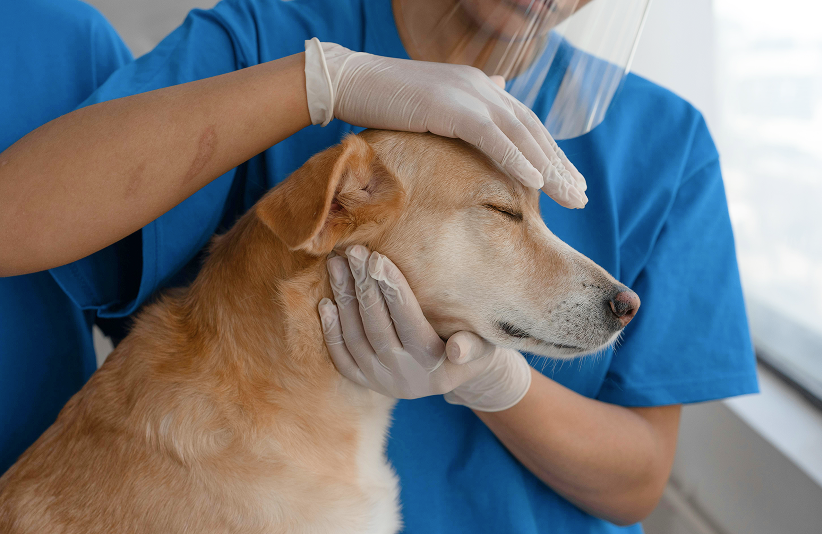
Whether you have a clear veterinary telehealth project in mind or are just starting to explore the possibilities of AI, we're here to help. Reach out to discuss your challenge, and we'll find a custom AI pet care solution for your patients' well-being!